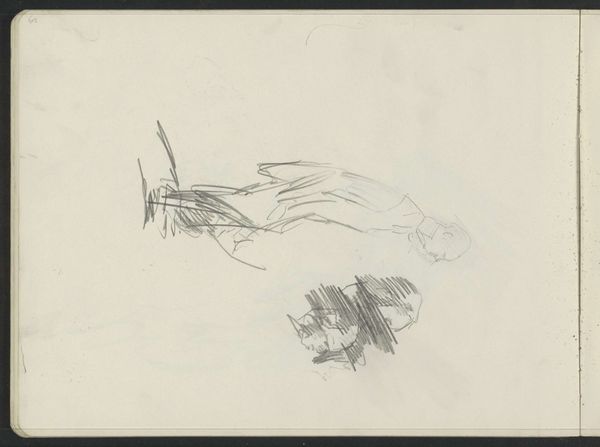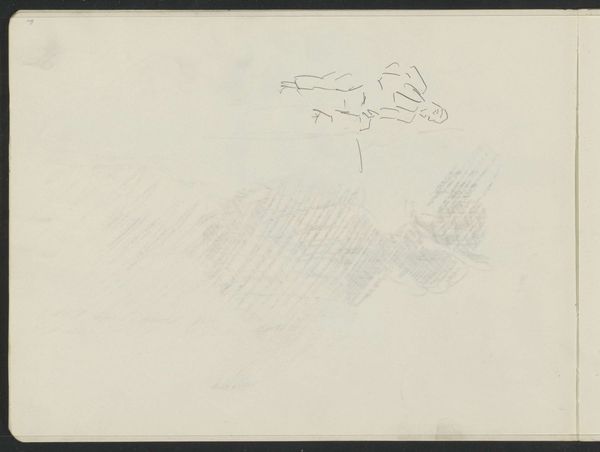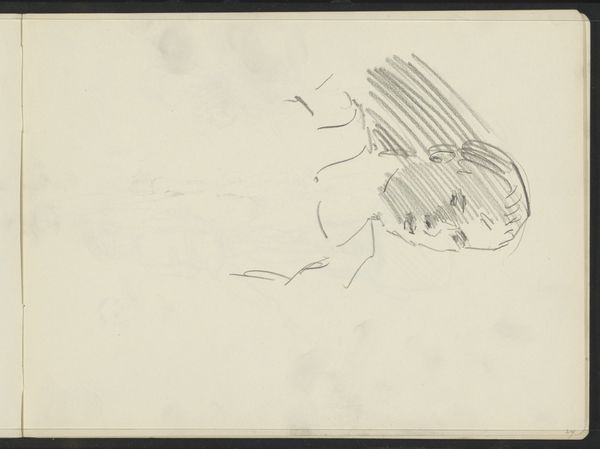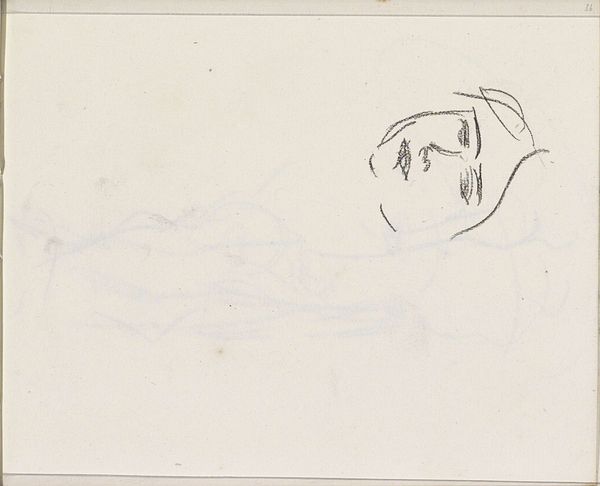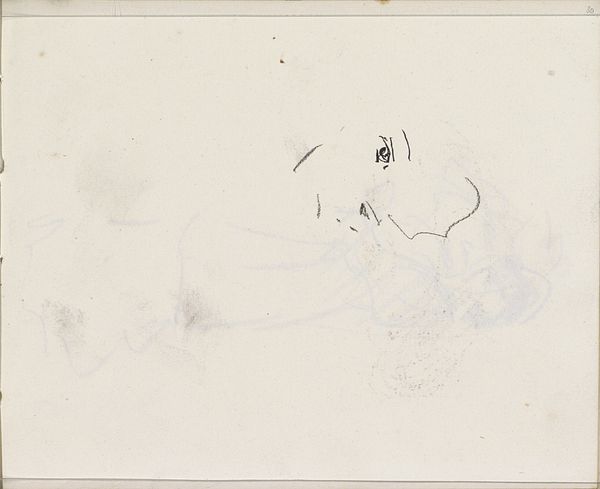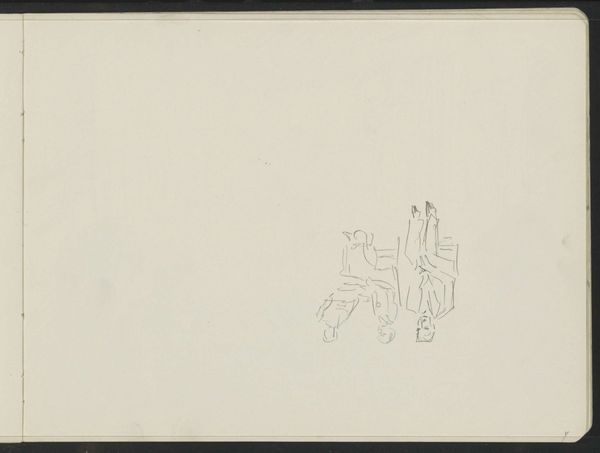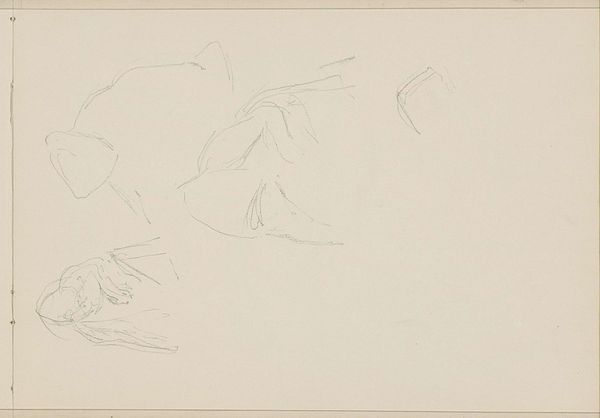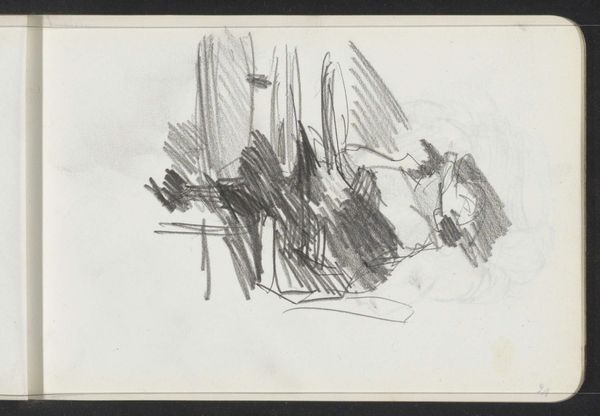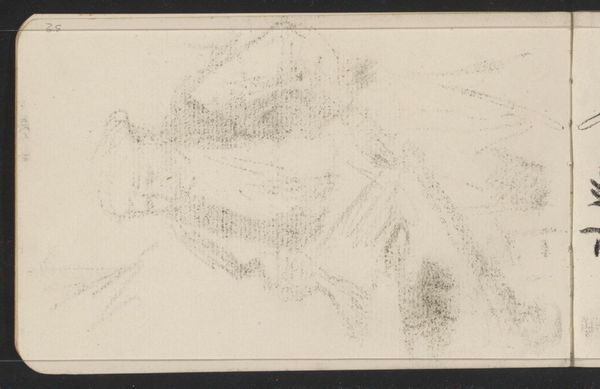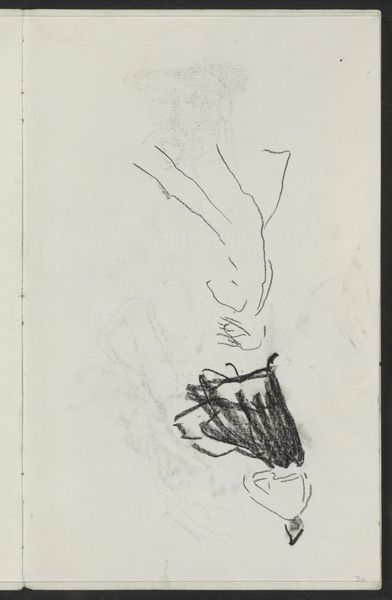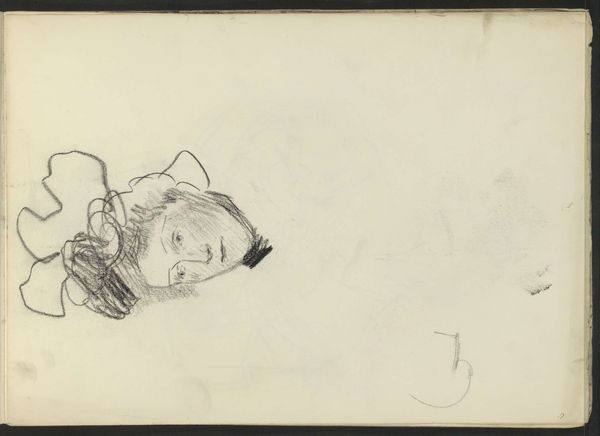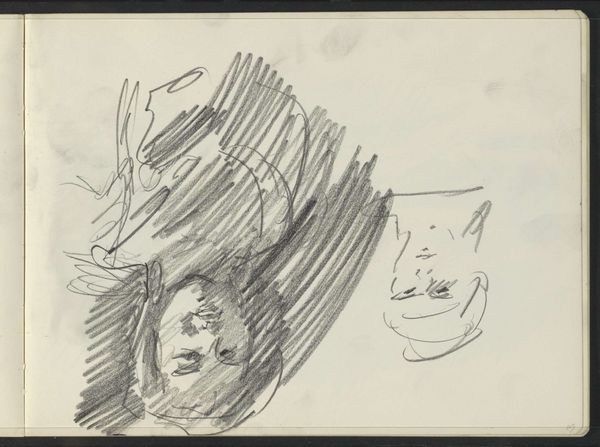
#
light pencil work
#
quirky sketch
#
face
#
pen sketch
#
incomplete sketchy
#
personal sketchbook
#
ink drawing experimentation
#
pen-ink sketch
#
sketchbook drawing
#
sketchbook art
#
initial sketch
Copyright: Rijks Museum: Open Domain
Editor: We're looking at "Gezicht" by Isaac Israels, probably made sometime between 1915 and 1925. It’s a delicate sketch, seemingly in pencil or light ink, showing the face of someone. There’s something really intimate about it, like a glimpse into the artist's personal sketchbook. How would you interpret a seemingly casual piece like this being in a museum like the Rijksmuseum? Curator: Well, what appears casual actually offers a potent glimpse into the artist’s process and, by extension, the evolving role of art in society. Israels, belonging to the Amsterdam Impressionism movement, focused on depicting everyday life. How might this sketch challenge the conventional idea of what constituted 'worthy' subject matter for art, and its presentation? Editor: That’s a good point. I suppose before impressionism, grand historical scenes or portraits of the elite were the norm for museum display. Curator: Precisely! A sketch like "Gezicht" suggests a shift in cultural values, towards appreciating the beauty and significance found in fleeting moments and ordinary subjects. The museum's choice to display this shifts the paradigm, almost democratizing art. Why do you think the Rijksmuseum might choose to exhibit what seems like an unfinished work? Editor: Maybe to show the raw talent and initial thought process? It also allows a broader audience to connect with art. The ‘personal sketchbook’ vibe normalizes the artistic process. Curator: Exactly. The incomplete nature, that initial sketch, can also be viewed through the lens of social commentary. Consider the rise of photography during this time. Did sketching offer something photography couldn't? Editor: I never considered the comparison to photography! I suppose sketching retains that human element, a sense of interpretation that photography, even then, lacked. Curator: Right. And the museum’s showcasing of this “snapshot” encourages the public to value individual perceptions, even incomplete ones, further fueling a culture of creativity and expression. This piece really illuminates how institutions like museums aren’t static. Their choices shape what we, as a society, deem valuable art. Editor: This conversation made me reconsider the influence a museum has on validating what's deemed art. Thanks! Curator: And understanding this subtle political play of imagery gives us the ability to truly see art.
Comments
No comments
Be the first to comment and join the conversation on the ultimate creative platform.
